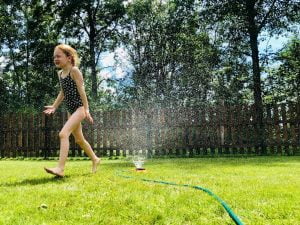Anger is something that we often associate with adults. With their busy schedules, high-stress jobs, and other responsibilities, it’s easy to see why adults would get angry when any number of things don’t go according to plan. When it comes to kids, we understand that sometimes they get angry, and they have tantrums if they don’t get their way with something. But most adults figure that the lives of kids are chock-full of play and fun, so anger isn’t a real problem that they need to deal with. However, even for children, anger can become a genuine problem that they need help to navigate. When a child regularly stomps and yells and you feel overwhelmed by it all, that needs to be addressed for your child’s sake as well as for the overall health and peace of your household. In this article, we will look at some anger management techniques for children to help make your home a more peaceful place.
It’s important when talking about anger that we recognize that it is an emotion that alerts us that something is wrong in our world, whether emotionally, mentally, physically, or in our environment. It’s okay to be angry, and we need to let children know that it’s okay to be angry. We are beings made in God’s image, and often we find God being angry at the sin and hurt in the world. What matters is why we are angry and what we do with it. Simi Valley Christian Counseling provides guidance and support for those struggling with anger, helping them find healthy ways to manage their emotions and restore relationships.
Anger Management Techniques for Children
 There are healthy and constructive ways for us to express our anger, and there are ways we express (or don’t express) our anger which is destructive to us or the people around us. So, as we help our little ones to express their anger, the goal is to normalize and confirm what they are feeling, and to help them express it and deal with it in healthy ways.
There are healthy and constructive ways for us to express our anger, and there are ways we express (or don’t express) our anger which is destructive to us or the people around us. So, as we help our little ones to express their anger, the goal is to normalize and confirm what they are feeling, and to help them express it and deal with it in healthy ways.
Here are a few tips and anger management techniques for children that you can use in the short-term to help your child deal with their anger.
Don’t talk so much.
As parents and caregivers, we want to teach our children to grow up into healthy and productive adults. as such, we want to take every opportunity to teach them the right way they should go. When your child is feeling angry, their body primes the fight or flight response, and in that state, it’s hard enough for adults to process information, let alone a child.
This should not be considered a teachable moment or the time to sermonize. Don’t talk a lot and try to use a neutral and quiet tone that will help them to calm down. Using repetition in these moments is helpful because they can digest that easier in their frame of mind. You can repeat phrases such as “I’m right here with you”, “I want to help you”, “I love you”, “You’re angry, I understand that”, and so on.
These and many other phrases can help calm them and reassure them of your presence and support. It helps them to feel that what they’re going through isn’t big enough to rattle mom or dad, and they are safe. By normalizing it, we allow our children to better deal with their feelings of anger.
Let them express themselves.
There are some quick, simple, and safe ways you can let a child express their anger without hurting themselves or others around them. Engaging their senses can help to calm their minds and bodies.
You can let the child squish a stress ball, do some jumping jacks, jump on a trampoline, scribble on paper, rip up paper, pop some bubble wrap, squish some playdoh, or give themselves a big hug. These can help the child to express their frustration quickly and, in some cases, channel their adrenalin in a positive way.
Create a safe zone for them.
 When a child is angry, there is no guarantee that they will remain calm and not hurt others or themselves. One way to help them is to remove them from a space where they can break glass or throw hard objects that can injure others or destroy property.
When a child is angry, there is no guarantee that they will remain calm and not hurt others or themselves. One way to help them is to remove them from a space where they can break glass or throw hard objects that can injure others or destroy property.
In that safe zone, you can put up soft toys and even have the space painted in soothing tones if that is possible. You can create a calm down kit with crayons and a coloring book, soothing music, swatches of different textured fabric and so on that will engage their senses to help calm them.
If you can’t create a safe zone for them or get to it in time, you can try the best you can to clear the space you’re in of any objects that can hurt others. Sometimes, sending your kid into a time-out, and teaching them to remove themselves from a situation when they need it is another helpful anger management tool.
Be calm.
When your child feels angry and is acting out, it is tempting to yield to your fears and other emotions at that moment. If they are angry because of something a sibling did, and they lash out against that sibling, it’s tempting to let our own anger take over and for us to enter that storm of emotions with them.
 Instead, it’s helpful to remember that you are there to help them deal with their emotions, to set a good example for them, and to help calm things down instead of escalating the situation. If necessary, take a moment, take a few breaths, or even momentarily remove yourself from the situation so that you can return to the space calm and ready to help your child work through their anger.
Instead, it’s helpful to remember that you are there to help them deal with their emotions, to set a good example for them, and to help calm things down instead of escalating the situation. If necessary, take a moment, take a few breaths, or even momentarily remove yourself from the situation so that you can return to the space calm and ready to help your child work through their anger.
Kids watch and learn from their parents, and so how you model anger management makes a dramatic difference. If you lose your cool, take responsibility for your actions and discuss with them what you should have done instead.
For the long-term, you want to help a child with healthy ways of expressing their emotions, but also to take proactive measures by helping them to learn how to identify their triggers and their emotions so that they can head off anger before it consumes them. You can work to provide them with coping skills they will need to deal with their emotions. Some of the ways to do this over the long-term include:
Read books about anger with them.
This will give your child both the vocabulary to describe anger, as well as awareness of anger and other big feelings. They will also give you opportunities to help your child process anger in their past and prepare them for any future incidents.
As kids learn to label their feelings, they can better verbalize them and begin to discern the difference between their feelings and behavior. Some books can help your child begin to learn strategies for dealing with anger, like walking away instead of lashing out.
Help them identify triggers.
 Kids, like adults, have personalities. Some things make us angry, while for other people it’s no big deal; it’s the same thing with children. For your child, it may be when someone moves their things, if they don’t get their snack on time and are hungry, or if someone breaks their word or they may be frustrated with one subject or another in school. Whatever your child’s triggers might be, help them to recognize it for what it is, and they’ll know it when they see it again and prepare to deal with it properly.
Kids, like adults, have personalities. Some things make us angry, while for other people it’s no big deal; it’s the same thing with children. For your child, it may be when someone moves their things, if they don’t get their snack on time and are hungry, or if someone breaks their word or they may be frustrated with one subject or another in school. Whatever your child’s triggers might be, help them to recognize it for what it is, and they’ll know it when they see it again and prepare to deal with it properly.
Teach them coping and problem-solving skills.
Practice makes perfect, and like with anything else, having sharp skills to cope with anger will help when you need them. Your child may want to practice channeling their frustration into art or use relaxation and breathing techniques so that they know what it looks like and feels outside of the situation.
When they do feel angry, they can lean on their acquired coping skills. These coping skills go for parents as well. Being able to stay calm while your child is having a tantrum is something that takes skill, too.
Breathing techniques that help you to calm down, or self-talk that helps you remind yourself of your role as the calm presence for your child are examples of things you can do to prepare yourself for future angry outbursts. Teach your child problem-solving skills so that they learn to solve problems without resorting to violence. This will help them in the long-term.
Find a support network.
Parenting can be a lonely business. Not only that, sometimes feelings of shame or thoughts of failure can further isolate us from a support network. It’s important to remember that you are not alone on your parenting journey.
There are many other parents out there who have children that have angry outbursts, and who need wisdom and support in dealing with them. Finding others online and in-person with whom you can talk to share tips, stories, and commiserate can be a huge help in your parenting journey. A Christian counselor at Simi Valley Christian Counseling can offer support and strategies to help you navigate this journey.
“Toy Train”, Courtesy of Jerry Wang, Unsplash.com, CC0 License; “Playing in the Sprinkler”, Courtesy of Elena Rabkina, Unsplash.com, CC0 License; “Blowing Bubbles”, Courtesy of Katherine Hanlon, Unsplash.com, CC0 License; “Running Through the Leaves”, Courtesy of Ivan Sumlikin, Unsplash.com, CC0 License
- Kate Motaung: Curator
Kate Motaung is the Senior Writer, Editor, and Content Manager for a multi-state company. She is the author of several books including Letters to Grief, 101 Prayers for Comfort in Difficult Times, and A Place to Land: A Story of Longing and Belonging...
DISCLAIMER: THIS ARTICLE DOES NOT PROVIDE MEDICAL ADVICE
Articles are intended for informational purposes only and do not constitute medical advice; the content is not intended to be a substitute for professional medical advice, diagnosis, or treatment. All opinions expressed by authors and quoted sources are their own and do not necessarily reflect the opinions of the editors, publishers or editorial boards of Stone Oak Christian Counseling. This website does not recommend or endorse any specific tests, physicians, products, procedures, opinions, or other information that may be mentioned on the Site. Reliance on any information provided by this website is solely at your own risk.





